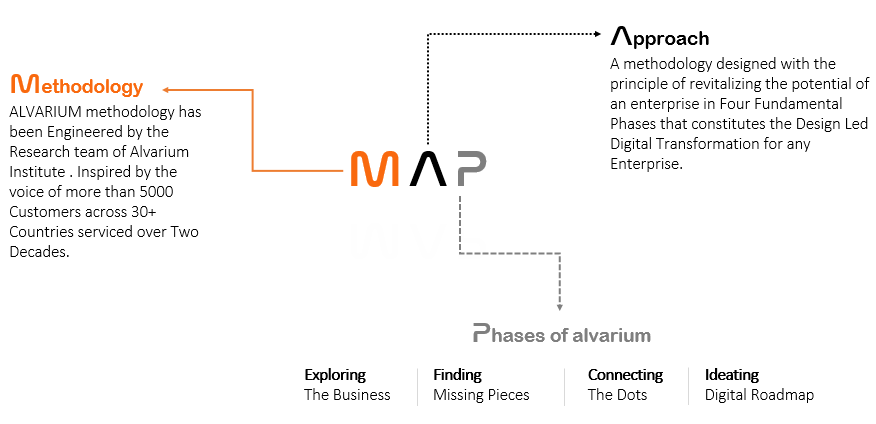
Why you Need a Design-led Consulting Approach?
Alvarium
Albert Einstein once stated, “We can’t solve problems by using the same kind of thinking we used when we created them.”
Digitally empowered consumers today demand seamless experiences that allow them to engage with brands as they want, where they want, and when they want to. Such standards are continually changing as customers are exposed to new products and innovations, and the competition for customer experience (CX) and customer attention is intensifying with the continued expansion of smartphones, displays, and interfaces. A majority of companies understand the importance of customer experience, but connecting the dots to create a brand story that resonates with consumers has always been a challenge for the companies. Only a few companies adapt to a design-led method for improving CX, rest are adopting a conventional method which is leading to failure at various levels.
Design-led practicing firms are well aware of the importance of design thinking for delivering consistent, seamless experiences across various channels and devices to encounter the rapid rising expectations of the consumer. Design-led thinking is a human-centred approach that combines consumer experience, intuition, new infrastructure, research opportunities and the demands for market success. It crystallizes consumer interactions into a concept that can be implemented, makes rendering of cross-functional projects possible, and eventually builds end systems that represent a particular market purpose in the company.
Design-led consulting consists of two phases- innovation and transformation. The idea and brainstorming are done in the innovation phase, however roadmap and execution are conducted at the transformation phase.
Design-led innovation is a practice which involves exploring and discovery of specific problems, generating new ideas, and brainstorming them, combining the gathered knowledge and turning them into a unique proposal for the problem. The design-led innovation process overlaps with design-led transformation, where the what and why scenarios to the problem are derived, then it goes to the how phase, where it transforms into viable solutions with a structured roadmap. On the other hand, design-led transformation is the roadmap for continuous transformation of business and organizational activities, business models and processes to fully leverage the changes and opportunities of a mix of digital technologies.
The entire process is iterative and requires continuous improvement to solve business problems. At Alvarium, we practice design-led methodology for digital transformation. Our design-led approach leverages concepts of design thinking, which constitutes of a problem-solving mindset and methodology. Through this approach, we create a transformation roadmap and implement/deploy technology stack for the customers to achieve their transformation goals.
Our methodology to achieve successful transformation –

Through this methodology, we have served multiple customers across the globe in various domains. Their revenue and operations performance indicated high growth. For instance – one of our client who is a leading player in the freight industry came to us with the below business challenges:
- Customer attrition due to uncompetitive and disparate quotations
- Productivity loss due to high manual efforts of back-office in quotation generation
- Revenue loss due to high turnaround time in sharing quotations to the prospects
We followed the Alvarium methodology to transform and digitalize end-to-end tariff and quotation management processes by creating a single point application to be used by shippers and shipping companies.
Through our methodology, the company was able to achieve 20% increase in repeat customers, 35% reduction in customer attrition, 80% reduction in cost to generate a quotation, and 20% gain in revenue due to 40% increase in win ratio.
Reach out to us at consult@thealvarium.com to join hands with us!



 Belgium
Belgium Canada
Canada Denmark
Denmark Finland
Finland France
France Germany
Germany Iceland
Iceland Norway
Norway South Africa
South Africa Sweden
Sweden UAE
UAE UK
UK USA
USA